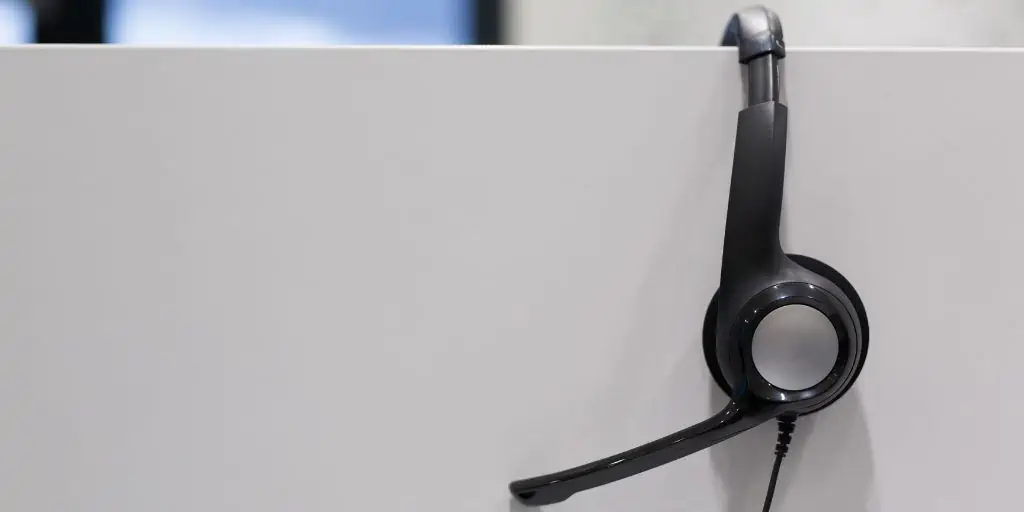What Is Cold Calling?
How Does Cold Calling Work?
Cold calling is the practice of calling an individual or business who has previously shown no interest or awareness in the business person’s products or services.
In marketing jargon, these customers are classified as “cold leads[1],” while the sales professionals who call cold leads are called telemarketers.

While telemarketers typically cold-call by phone (hence the name), sales reps can also use other channels to reach out, such as email, door-to-door visits, or driving for dollars in real estate investing.
Cold-calling professionals intensively research the market and their target customers beforehand. Moreover, they practice what they have to say to sound natural, even though they usually rely on a cold-calling script[2]. They also try to personalize cold calls with personal yet public record details learned about the lead to build trust and rapport[3]. A sales professional will identify pain points—issues a customer wants to have fixed—and bring those up during a sales call.
A cold call may last anywhere from a few seconds (in which the sales rep finds a better time to call back), to ten minutes or so if the prospective buyer shows interest in the product.
The goal of cold calling may vary depending on the sales team, but it is generally to make leads arrange an appointment or a follow-up call to talk business further. When cold leads accept meetings after the initial contact, they move from cold leads to warm leads.
Cold Calling vs. Warm Calling
Cold calling is so-called because it targets cold leads, i.e., individuals or businesses that show little to no interest in a salesperson’s products or services.
By contrast, warm calling involves prospects who have been aware of or have expressed interest in the salesperson’s offerings. These include people who may have specified their needs one way or another and know that the sales rep has solutions to satisfy them.
In a cold calling scenario, the salesperson needs to do an incredible job of warming up potential buyers to engage them. Statistically, successful cold calls are fairly rare.
Alternatively, warm leads require less time to nurture. Warm calls, emails, chats, text messages, or visits tend to have a much higher success rate.
A more appealing lead is a hot lead, a qualified lead who is explicitly interested in the product or service represented in the sales call[4]. A hot lead often becomes a buying customer without an aggressive sales pitch.
Cold Calling in Real Estate
A common cold calling scenario in real estate involves real estate agents[5] cold-calling sellers whose listings are expired or for sale by owner (FSBO)[6].
These prospects tend to be more inclined to do business with a listing agent who reaches out to them because their motivations are easy to recognize (a “motivated seller”).
For example, sellers with expired listings may be frustrated that their property is not selling. They may think a different agent can attract more buyers at a good price.
Real estate investors also use cold-calling strategies. Investors will create a list of potential customers (i.e., sellers) from a specific county or a data provider. Like a real estate agent’s approach, an investor will often find sellers whose properties were listed as FSBO, call them, and then ask to buy these properties from the sellers, typically at a discount.
A similar practice in real estate investing is direct mail, where instead of a phone call, the investor sends out physical letters and postcards to the sellers on that particular list (who may or may not have listed their properties as FSBO). Like a cold call, the contents of the letters and postcards are a proposition for purchasing property from a potential seller.
Data Sources for Cold Calling
Real estate agents and investors can get leads by downloading seller information from multiple listing services (MLSs) or acquiring them from auto-dialer software vendors.
MLSs can be a treasure trove of data, but parsing useful leads from them can be incredibly time-consuming. Real estate dialer service providers, on the other hand, can help automate the whole process for a fee.
Is Cold Calling Worth It in Real Estate?
In absolute terms, any form of home seller outreach (including cold calling) that results in conversion is worth the effort.
Research shows that cold leads, on average, will say “no” four times before they say “yes,” which means agents and investors may find it worthwhile to make 2-4 phone calls[7] before disqualifying the lead. On top of making calls, agents can send a follow-up email or try cold-calling software with a pre-recorded message.
Unfortunately, the same research also shows that half of cold callers disqualify the lead after the first “no.” Therefore, if an investor or agent feels the only thing holding them back is call reluctance[8], cold calling is a gold mine.
That said, there is a thin line between relentless and obnoxious. A real estate professional who follows up while treading carefully may yet turn a cold lead into a client.
This is why sales teams will study how to cold-call and work on practices like conversational intelligence. The cold calling success rate is almost always dependent on the initial cold call and follow-up strategies employed by sales professionals, no matter the industry.
BY THE NUMBERS: About 2 out of 100 cold sales calls lead to a follow-up meeting or an appointment.
Source: Keller Center Research
Is Cold Calling Illegal?
Cold calling is perfectly legal. However, telemarketers have to comply with the rules and standards of the Telemarketing Sales Rule (TSR)[9].
The TSR aims to prevent fraud, safeguard consumers’ privacy, and help the public identify unscrupulous salespeople.
The TSR proscribes unscrupulous business practices, including misrepresentation, unauthorized billing, payment restrictions, and outbound calls made outside 8 a.m. to 9 p.m. without the lead’s prior consent. Thanks to existing protections against disreputable telemarketers, boiler room schemes[10] are no longer as common as they used to be.
Civil charges await TSR offenders, with violations costing up to $42,530 per offense.
Since 1995, the TSR has been amended several times to keep up with evolving technologies and the abuses that will inevitably come from them[11].
Takeaways
- Cold calling is a sales practice of contacting leads who are not aware of or have not expressed interest in the product or service.
- Cold calling got its name from cold leads, which are prospects that are far from getting converted.
- Real estate cold calling involves either agents or investors calling motivated sellers, either to find buyers (in the case of agents) or to buy the property (in the case of investors).
Sources
- Gerokonstantis, C. (2020, December 14.) What Do ‘’Cold’’, ‘’Warm’’ and ‘’Hot’’ Leads Mean? LinkedIn. Retrieved from https://www.linkedin.com/pulse/what-do-cold-warm-hot-leads-mean-chrys-gerokonstantis/
- Tyre, D. (2022, November 16.) The Best Cold Call Script Ever [Template]. HubSpot. Retrieved from https://blog.hubspot.com/sales/cold-call-script
- Cold Calling Tips & Techniques. (n.d.) LinkedIn Sales Solutions. Retrieved from https://business.linkedin.com/sales-solutions/resources/cold-calling
- Rozenblat, J. (2021, February 16.) The difference between cold, warm, and hot leads. CallRail. Retrieved from https://www.callrail.com/blog/the-difference-between-cold-warm-and-hot-leads
- Bortz, D. (2022, October 17.) What Is a Real Estate Broker vs Real Estate Agent—and Who Should You Hire? realtor.com®. Retrieved from https://www.realtor.com/advice/buy/what-is-a-real-estate-broker/
- De Socio, M. (2022, April 5.) Selling Your Home Without a Real Estate Agent Could Save You Thousands of Dollars. Here’s What You Should Know First. NextAdvisor with TIME. Retrieved from https://time.com/nextadvisor/mortgages/for-sale-by-owner-pros-cons/
- Ross, L. (2022, April 25.) The Importance of Sale Follow Ups – Statistics and Trends. Invesp. Retrieved from https://www.invespcro.com/blog/sale-follow-ups/
- Xavier, J. (2021, August 27.) How to beat call reluctance. Elite Agent. Retrieved from https://eliteagent.com/real-estate-call-reluctance/
- Complying with the Telemarketing Sales Rule. (2022, October 4.) Federal Trade Commission. Retrieved from https://www.ftc.gov/business-guidance/resources/complying-telemarketing-sales-rule
- Boiler Room Schemes. (n.d.) Investor.gov. Retrieved from https://www.investor.gov/introduction-investing/investing-basics/glossary/boiler-room-schemes
- Klein, D. (2022, May 20.) TSR Changes: What You Need To Know. Mondaq. Retrieved from https://www.mondaq.com/unitedstates/dodd-frank-consumer-protection-act/1194840/tsr-changes-what-you-need-to-know








